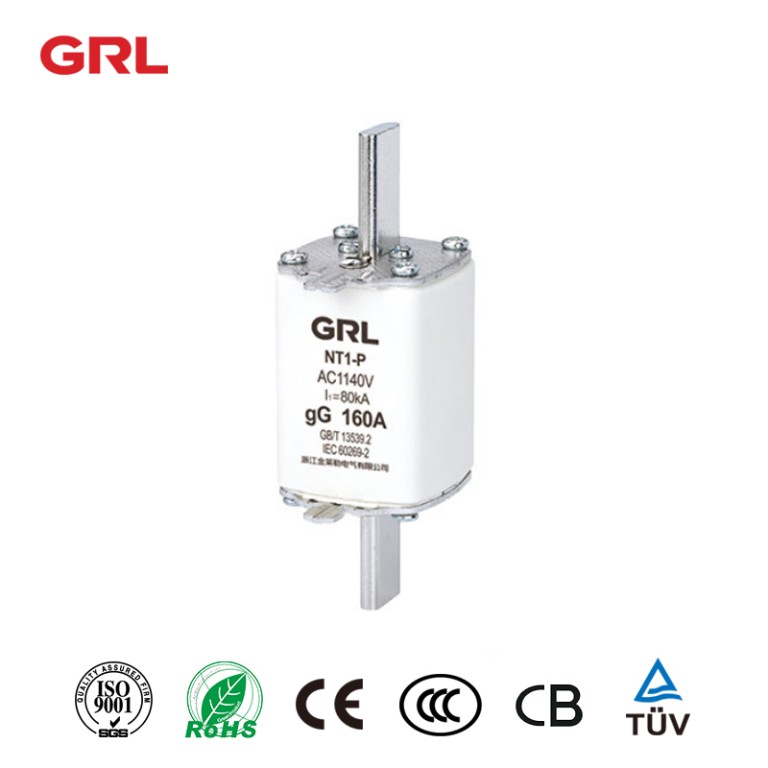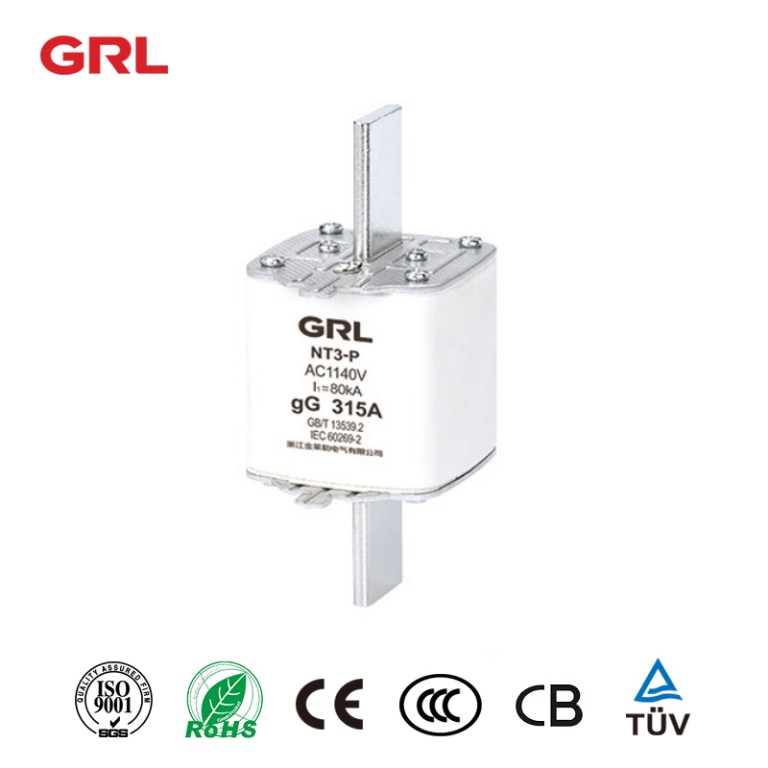NT1-P AC1140V fused links
| Type No | Size | Rated voltage ( V ) | Rated current ( A ) | Rated breaking capacity ( KA ) |
| NT1-P-6 |
1 |
AC 1140 | 6 |
80 |
| NT1-P-10 | 10 | |||
| NT1-P-16 | 16 | |||
| NT1-P-20 | 20 | |||
| NT1-P-25 | 25 | |||
| NT1-P-32 | 32 | |||
| NT1-P-40 | 40 | |||
| NT1-P-50 | 50 | |||
| NT1-P-63 | 63 | |||
| NT1-P-80 | 80 | |||
| NT1-P-100 | 100 | |||
| NT1-P-125 | 125 | |||
| NT1-P-160 | 160 |
NT3-P AC1140V fused links
| Type No | Size | Rated voltage ( V ) | Rated current ( A ) | Rated breaking capacity ( KA ) |
| NT3-P-100 |
3 |
AC 1140 | 100 |
80 |
| NT3-P-125 | 125 | |||
| NT3-P-160 | 160 | |||
| NT3-P-200 | 200 | |||
| NT3-P-224 | 224 | |||
| NT3-P-250 | 250 | |||
| NT3-P-315 | 315 |
How can one ensure compatibility with existing equipment or fuse holders?
Ensuring compatibility of semiconductor fuses with existing equipment or fuse holders involves several key considerations. It’s important to carefully match the fuse specifications with the requirements of the application and the characteristics of the existing hardware. Here are the steps and factors to consider:
- Physical Dimensions
Size and Shape: The fuse must physically fit into the existing fuse holder or space in the equipment. Check the dimensions (length, diameter for cylindrical fuses, or width and height for blade or chip fuses) against the specifications of the holder or mounting area.
Mounting Type: Verify whether the fuse is a cartridge type, blade type, surface mount, or other format, and ensure it matches the holder or circuit board layout.
- Electrical Ratings
Voltage Rating: The voltage rating of the replacement fuse must be equal to or greater than the voltage of the circuit in which it will be used. Using a fuse with a lower voltage rating can lead to unsafe conditions.
Current Rating: The current rating should be chosen based on the normal operating current of the circuit, with some margin to avoid nuisance tripping, but not so high that it fails to protect the circuit effectively.
Interrupting Rating: Ensure the fuse has an adequate interrupting rating (or breaking capacity), which is the maximum fault current the fuse can safely interrupt.
- Time-Current Characteristics
Fast-Acting vs. Slow-Blow: Determine if the application requires a fast-acting fuse (for quick response to overcurrent) or a slow-blow (time-delay) fuse (to tolerate temporary surges like motor start-ups).
Characteristic Curve: The time-current characteristic curve of the fuse should match the protection requirements of the circuit, ensuring it responds appropriately under overload and short-circuit conditions.
- Environmental Conditions
Temperature Range: Verify that the fuse can operate reliably within the ambient temperature range of the application.
Atmospheric Conditions: Consider factors like humidity, presence of corrosive gases, or exposure to vibration, which might affect fuse performance.
- Compliance and Standards
Regulatory Standards: Ensure the fuse meets necessary regulatory and safety standards, like UL, CE, or IEC.
Industry-Specific Requirements: Some industries may have specific standards or requirements for fuses (e.g., automotive, aerospace, medical).
- Manufacturer Compatibility
Brand and Series: Sometimes, specific equipment may recommend or require fuses from certain manufacturers or specific product lines for optimal performance.
Datasheets and Manufacturer Support: Refer to the datasheet of the fuse for detailed specifications. Manufacturer support can also be helpful in verifying compatibility.
- Special Features
Indicator Functions: If the existing system utilizes fuse failure indicators, ensure the replacement fuse supports this feature.
Arc-Quenching Technology: For high-power applications, the ability of the fuse to quench the arc efficiently might be important.
Conclusion
Ensuring compatibility requires a thorough understanding of both the application requirements and the specifications of the replacement fuse. It’s often beneficial to consult with technical experts or fuse manufacturers, especially for complex or critical applications, to ensure that the selected fuse will provide the necessary protection without compromising the performance or safety of the equipment.
Click to view grl group company information>>
Click to view grl fuse link product>>
Click to view fuse base product>>
Click to view fuse holder product>>
leave your question
GRL Electric Co., Ltd. is one of the leading companies in the Middle And High End market of low-voltage electric in China







